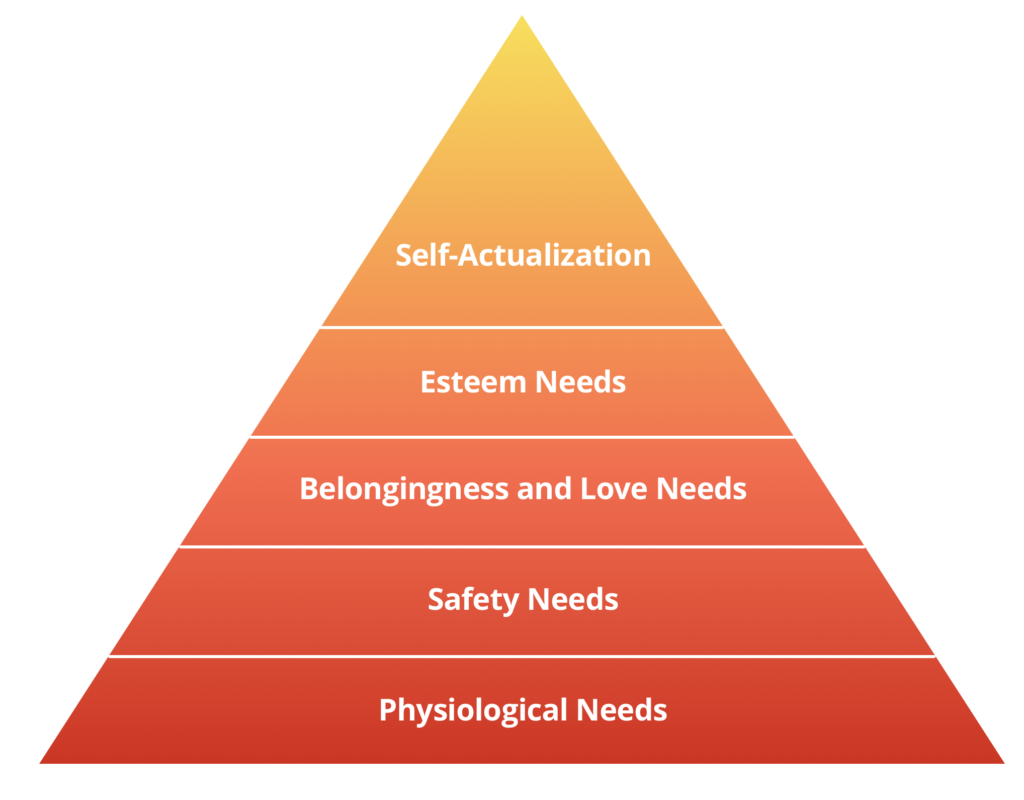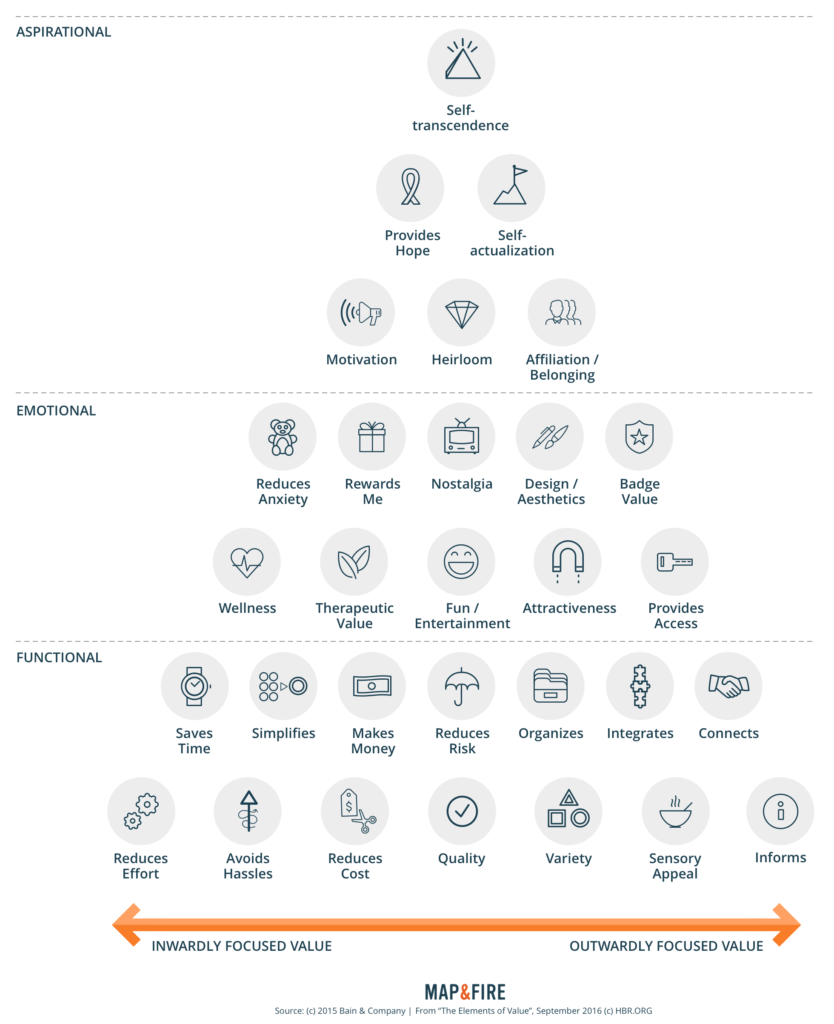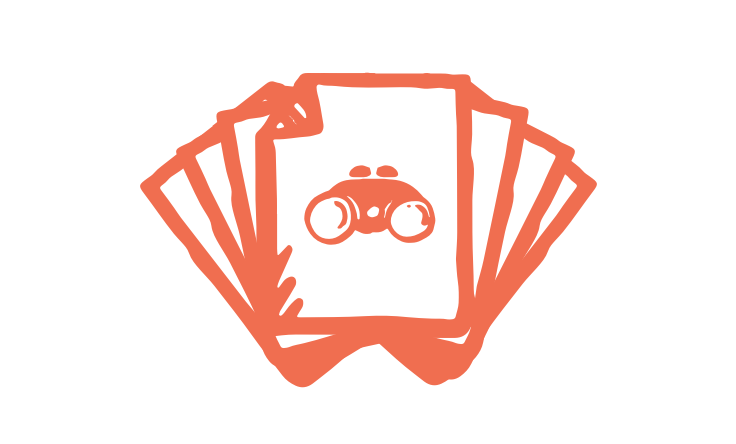Full Transcription
How well do you understand the different reasons why customers use your business? And how do you know where to invest more time and energy to improve loyalty and connect with more people? Today we’re going to talk about a tool that helps with all that.
Hi, I’m Clay from Map & Fire. And today we’re going to talk about a simple, but very powerful tool that you can use for your business to create stronger engagements with your customers, to differentiate yourself from the competition, and to help create a unique position for your brand. The tool is called the Elements of Value and it was developed by the consulting firm Bain & Company.
They studied dozens of companies and interviewed thousands of consumers to come up with these 30 individual elements that represent what consumers care about when they’re engaging with a particular product or service. You can read a little bit more about it on the Map & Fire website. But before we jump into that, I want to show you one other thing that will provide a little more context for why this is valuable for your business.
Maslow’s Hierarchy of Needs

This is Maslow’s hierarchy of needs. If you’re not familiar with this, it’s a model for helping to understand what motivates us as human beings. At the bottom of this we have the most basic elements that we need as humans like food, shelter, and sleep. And as we satisfy those things we move up the pyramid and we get into things like safety and connections with other people and feelings of accomplishment.
And as we satisfy those then we get to the top where we have self actualization. And this is where we fulfill the image that we have of ourselves and we can engage in creative work.
Elements of Value

With the elements of value we mirror the same structure, but from a business point of view. At the bottom, we have very functional elements, like saving time, simplifying tasks, and reducing cost. Then in the middle tier, we have emotional elements like thinking about your wellness or reducing anxiety.
At the top tier we have aspirational elements. This can be things like feeling a sense of belonging or self-actualization. Or even at the very top self-transcendence where we start to think about the impact of what we do on the rest of the world, outside of ourselves.
The Relationship Between Them
When we see these two frameworks together, then we start to understand the relationship between what motivates us fundamentally as people and what you provide as a business.
As people, we’re trying to move higher up this pyramid, so we seek out products and services that can help us along in that journey. And this is part of what Bane found in developing this model is that the more elements you can satisfy at a high level the more attractive your business becomes to customers, and the more loyal they become to your brand.
This makes intuitive sense as well. If you’re helping to satisfy these fundamental things that people need as human beings, it makes sense that they’ll want to keep coming back to you for more of that.
Using The Elements of Value to Create a Unique Brand
That’s the real power in all of this. It helps you identify which elements you’re going to be focused on and also which elements customers think about when they engage with you.
When you start to understand all of this, then you can figure out which combination of elements will help you create a unique brand.
Key Questions:
- How does investing in certain elements affect your position in the landscape?
- Which elements are you really strong in that you should double down on?
- Which elements are your competitors really strong in where you should invest less because there’s really no competitive edge to be gained.
All of these decisions can impact your brand, marketing, messaging, and ultimately your product or service. So it’s really important to understand which Elements of Value you’re focused on and use that to your advantage.
Outro
That’s it for this video on the Elements of Value. If you found this helpful, please like the video leave a comment subscribe to the channel.
If you want some more resources for your business, you can go to mapandfire.com. Our Brand Strategy Field Guide has articles, exercises, and all kinds of other stuff. So check it out and I will see you next time.


